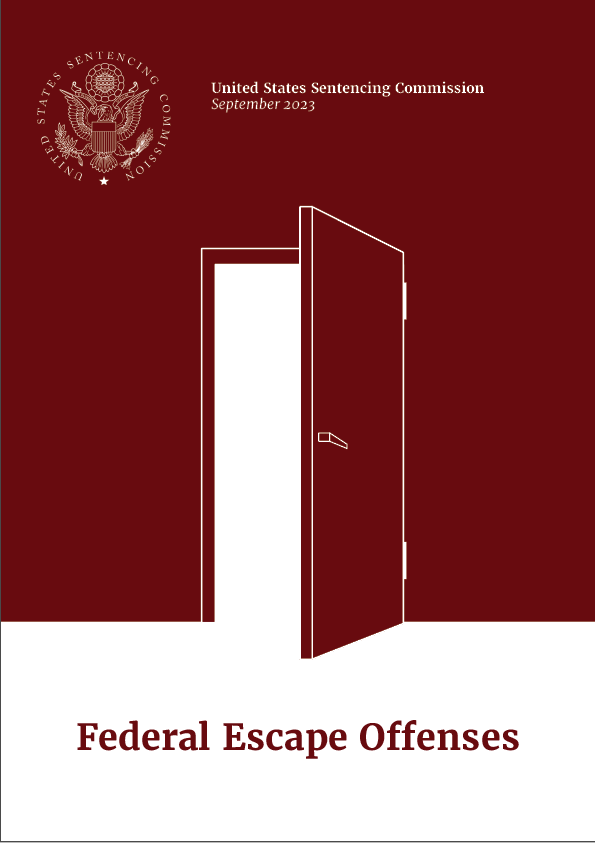Summary
(Published September 2023) This new publication expands upon the Commission’s previous research on federal escape offenses. In this report, the Commission combines data it regularly collects with data from a special coding project to provide a deeper understanding of escape offenses and the individuals who commit those crimes. The report provides the characteristics of individuals who commit escape offenses, then chronologically examines their criminal histories before the instant offense through their alleged criminal behavior while on escape status. Next it provides information on their subsequent sentencing. Finally, this report examines their criminal behavior after being released into the community by the recidivism rates of a cohort of individuals released from federal custody in 2010.
Key Findings
- Escape offenses accounted for less than one percent (0.4%) of all federal offenses between fiscal years 2017 and 2021.
- Individuals sentenced for escape offenses had extensive and serious criminal histories.
- More than half (54.1%) were in the two most serious Criminal History Categories of V (20.6%) and VI (33.5%), compared to one-fifth (21.1%) of U.S. citizens sentenced in Criminal History Category V (7.3%) and Criminal History Category VI (13.8%) (see figure below).
- Two-thirds (67.0%) had a prior conviction for a violent offense, nearly double that of other sentenced U.S. citizens (38.1%).
- Approximately two-thirds (65.3%) were originally sentenced for a firearms offense (33.4%) or a drug trafficking offense (31.9%).
- Approximately one-quarter (26.5%) had at least one prior conviction for escape.
- Most federal escapes were from non-secure custody (see figure below). The majority (89.0%) of individuals escaped from a Residential Reentry Center (i.e., a halfway house).
- The median length of time that individuals sentenced for escape offenses remained at large was one month.
- More than one-third (36.2%) were arrested for or alleged to have committed a crime while at large; one-fifth (20.8%) of those crimes were violent (see figure below).
- More than one-third (35.1%) were apprehended after concerted efforts by law enforcement. Approximately one-fifth (22.2%) were identified after being arrested for a new crime.
- Nearly all (99.2%) individuals sentenced for an escape offense received a sentence of imprisonment. The average term of imprisonment was 12 months.
- Nearly two-thirds (65.0%) of individuals sentenced for an escape offense were sentenced within the guideline range for their escape crime, compared to 40.2 percent of all other federally sentenced U.S. citizens.
- The majority (85.7%) of individuals sentenced for an escape offense and released in 2010 were rearrested during an eight-year follow-up period, which was higher than individuals sentenced for any other type of federal offense (see figure below). By comparison, one-half (49.2%) of other individuals released in 2010 were rearrested during the same time period.
- Individuals sentenced for escape offenses were rearrested sooner after release compared to other sentenced individuals. Their median time to rearrest was ten months, compared to 19 months for the remaining 2010 cohort.

